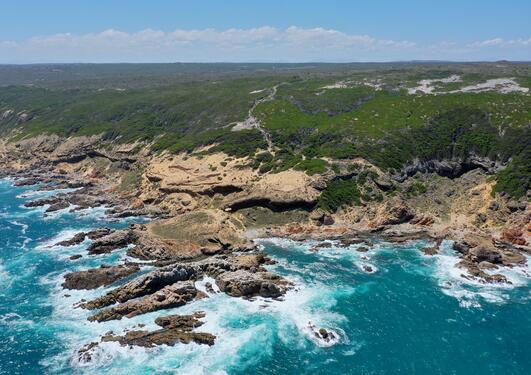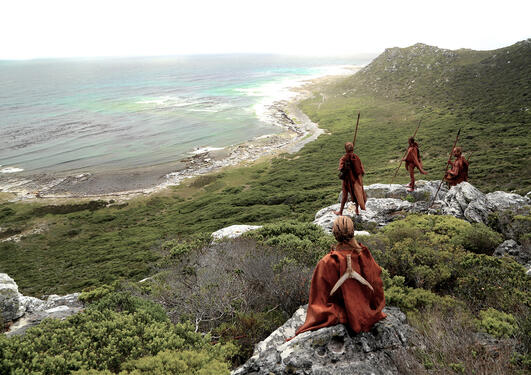Tell me what you eat and I will tell you what you are
New research proves that our ancestors cooked starchy rhizome 170 000 years ago. The study also implies that the food was shared as a social act around the fire.

Main content
"Tell me what you eat and I will tell you what you are” is an old French saying. Reconstructing the diet of our ancestors and understanding how it changed through time are key goals of all archaeological research", says Francesco d’Errico. He is professor II at UiB and part of UiB’s Centre of Excellence Early Sapiens Behaviour (SapienCE), which aims to piece together the puzzle of how and when we became who we are today.
Insight to early behavior
d’Errico co-directs the excavation at Border Cave, South Africa, with Lucinda Backwell (Argentinian CONICET) and Lyn Wadley (University of the Witwatersrand, Johannesburg). An excavation which led to the astonishing finding of rhizomes that were cooked, shared and eaten by our ancestors 170 000 years ago. The finding was recently published in Science Magazine.
"This discovery is much older than earlier reports for cooking plants and it provides a fascinating insight into the behavioural practices of early modern humans in southern Africa. It also implies that they shared food and used wooden sticks to extract plants from the ground", says Professor Lyn Wadley, based at the Evolutionary Studies Institute at the University of the Witwatersrand.
d'Errico explains that the rhizomes were not eaten raw on the spot, but brought to the cave to be cooked, and presumably shared with other members of the group who may have spent their day in other activities such as hunting.

THREE VIEWS: Three views of Border Cave rhizome.
Transforming food into a social act
Cooking the rhizomes facilitate digestion and assimilation of nutrients. It provides glucides that are, apart from the seldom collection of honey and fruits, otherwise difficult to find and integrate in your diet on a regular basis when you are a hunter-gatherer.
"In other words, eating rhizomes is not important in itself. What is important is the ability of some modern populations to transform food into a social act, to share it according to elaborate cultural rules that allow everybody to get a bit, thus creating more cohesion within the group", d’Errico explains.
Part of the cultural puzzle
He says that this finding is relevant in the context of the work SapienCE is carrying out at other South-African caves, such as Klasies River and Blombos Cave.
"Current scenarios on the emergence of our species in Africa predict a changing geography with human population genetically and culturally connected at some times and isolated at other. When disconnected, these populations may have developed original cultural adaptations, and when connected they may have shared innovations. To reach a global understanding of the phenomenon we need to reconstruct and compare coeval cultural adaptations from different regions, and follow their evolution through time. Blombos Cave and Klasies River are, as Border Cave, key pieces of this puzzle".

Drone photo of the Border Cave entrance. The site, at the border between South Africa and Swaziland is excavated since 2015.


